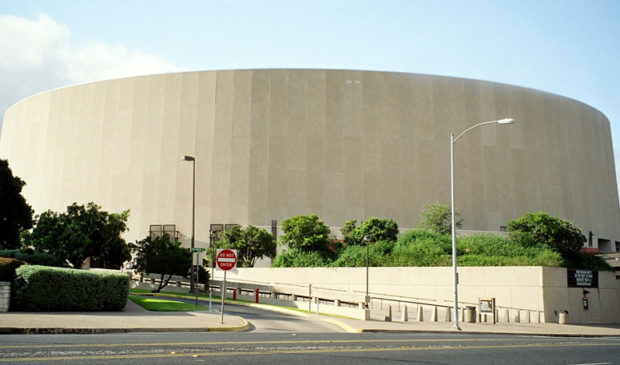Red River agreement fails to answer mobility questions
Monday, September 23, 2019 by
Ryan Thornton The University of Texas has yet to articulate its plans to mitigate traffic issues while Red River Street is closed through campus for roughly two years to make way for replacement of the Frank Erwin Center. However, City Council demonstrated its faith in the university by approving an agreement with the UT Board of Regents on Thursday to begin that work as early as December.
Richard Suttle, representing the university, said UT plans to collaborate with the Austin Transportation Department on a traffic plan to alleviate any existing and future traffic issues along the eastern portion of campus.
Bicycle advocates have asked the university to prepare for the fact that closing Red River Street to traffic could force more cars onto San Jacinto Boulevard, a popular cycling route that has no bicycle facilities and is already unsafe for users.
Council Member Natasha Harper-Madison, who is generally supportive of the project, pressed the issue, asking the university to commit to protecting cyclists during that time.
“(San Jacinto) is a tricky street to navigate for pedestrians and cyclists and scooter operators and I just want to be certain that during the course of the construction project that the (university) is going to take every possible consideration and work with the city’s Transportation Department and make certain we have some really comprehensive bike infrastructure consideration set up,” Harper-Madison said.
Suttle was unable to provide details for such a measure. As the traffic plan evolves, he said, the university will collaborate with the city on providing a safe bicycle path during construction. According to Jim Walker, the university’s director of sustainability, the university does not wish to install any temporary or permanent bike paths on San Jacinto in the short term. Walker said the university has not ruled out the possibility of a shared-use bicycle and pedestrian path between San Jacinto and the Interstate 35 frontage road.
Beyond that, when the new Red River Street opens around November 2021, Suttle said it will include bike lanes on both sides of the street.
While members of the city’s Bicycle Advisory Council have called for those lanes to be protected from car traffic by physical barriers, Suttle did not address the specific type of lanes included in the plan. Walker told the BAC last week he did not think current designs featured any such physical protections.
Transportation Director Robert Spillar told Council that, while the new Red River bike lanes may not be protected, they would at least be buffered by more than a single stripe of paint, in alignment with the city’s standards for its All Ages and Abilities Bicycle Network.
According to the interlocal agreement, posted on the city’s website Wednesday, the new Red River Street will be generally designed and constructed for speeds no higher than 25 mph.
Council Member Kathie Tovo said stakeholders have also requested the sidewalks lining the new street to be at least 10 feet wide. Here, too, Suttle could not provide confirmation of the design, but assured Council that they would likely conform to city standards.
“At the university, they actually have more of an interest of moving people on sidewalks than we do in other areas of our city because they’re moving large numbers of students in and out of the campus. So oftentimes their sidewalks are wider than what we would require,” Suttle said.
Having had less than a full day to review the agreement, Council Member Alison Alter said she was still unsure if the city was receiving enough value from the exchange compared to the right of way being given up to the university. “As a community we cannot simply give up our leverage time and time again in negotiations,” she said.
With a motion of approval by Harper-Madison, the agreement passed 9-0-2 with Council members Leslie Pool and Alter abstaining.
Photo by Larry D. Moore [CC BY-SA 3.0], via Wikimedia Commons.
The Austin Monitor’s work is made possible by donations from the community. Though our reporting covers donors from time to time, we are careful to keep business and editorial efforts separate while maintaining transparency. A complete list of donors is available here, and our code of ethics is explained here.
You're a community leader
And we’re honored you look to us for serious, in-depth news. You know a strong community needs local and dedicated watchdog reporting. We’re here for you and that won’t change. Now will you take the powerful next step and support our nonprofit news organization?



